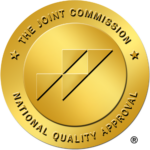Understanding Pros and Cons of Pain Medication
People are often prescribed painkillers when recovering from an injury or surgery, or coping with chronic pain. The painkillers are usually opioids, used for their effectiveness and the relief they provide to the patient.
However, along with their effectiveness comes the reality and risk of addiction. Because of the way in which opioid painkillers especially work on the central nervous system, one can become addicted to the effects of these painkillers almost without realizing it.
So, should opioid use be abandoned entirely? Do the risks completely outweigh the benefits? These powerful medications need to be used carefully and in moderation, with complete understanding of the effects of the prescription.
What are the most common painkillers?
Over-the-counter medications
A number of painkillers have become common household names, including Advil, Motrin and Tylenol.
Advil and Motrin (ibuprofen) are non-narcotics that can be purchased over-the-counter. This means that they don’t require a prescription from a doctor. Ibuprofen works by reducing tissue inflammation to relieve mild fever, general aches and pains. It may also be used to help ease joint pain experienced as a result of arthritis.
Tylenol (acetaminophen) also works to relieve fever, aches and pains, but not by lessening inflammation. In fact, scientists aren’t entirely sure how acetaminophen works, but they suspect that it actually increases the body’s pain tolerance, thereby lessening the feeling of pain overall.
Prescription
When severe pain cannot be treated with ibuprofen and acetaminophen, doctors will instead prescribe stronger painkillers, including opioid prescription medications. These include OxyContin, Vicodin and morphine.
OxyContin (oxycodone) is prescribed for severe pain that can only be treated with opioids or when other medications have failed to work. It alters the pain felt in the body and therefore changes the body’s response to the pain.
Vicodin, a potent combination of acetaminophen and hydrocodone (an opioid), blocks the nerve cell receptors in the brain from sensing pain.
According to the Mayo Clinic, morphine “is used to relieve short-term (acute) or long-term (chronic) moderate to severe pain. [It is] used to treat pain severe enough to require daily, around-the-clock, long-term opioid treatment and when other pain medicines did not work well enough or cannot be tolerated.”
Always use prescription opioids exactly as prescribed for you by your doctor.
What are the benefits of taking painkillers?
Painkillers can be incredibly beneficial for those who need relief as they recover from surgery or navigate a diagnosis of chronic pain.
Prescription pain medication can help those with chronic pain regain control over their life. Chronic pain can interfere with work, school and everyday routines, and prescription medication can help keep this pain under control, thereby giving you the chance to live normally.
Painkillers also offer different levels of relief – this allows patients to opt for the lowest dose needed, or the prescription with the lowest risk first, before moving on to a stronger medication or larger dose if that proves ineffective.
What risks are associated with painkiller prescriptions?
As with all substances, there are negative effects of painkillers. As nerve cell blockers, opioids prevent the body from responding to pain naturally, thereby leading to withdrawal symptoms if the medication is stopped suddenly. Additionally, many of these medications can lead to long-term health conditions and/or addiction, especially if misused or overused.
Advil risks include:
- GI upset
- Dizziness
- Tinnitus
- Increased risk of stroke or heart attack
- Increased risk of bleeding, sores or holes forming in the stomach or intestines
Tylenol risks include:
- Heightened risk of liver damage and death as a result
- Serious, though rare, skin infections
Oxycodone risks include:
- A heightened tolerance that may lead to a habit forming addiction
- Sleep-related breathing problems
- Dizziness or lightheadedness
- Drowsiness
- Infertility
- Increased risk of serotonin syndrome
Vicodin risks include:
- Addiction or dependence
- Liver failure
- Sedation
- GI problems
- Suppressed breathing
- Drowsiness
Morphine risks include:
- Habit formation and the temptation to take more than the prescribed dose
- Addiction
- Anaphylaxis
- Constipation and GI upset
- Drowsiness
No matter what kind of pain medication you are prescribed, it’s absolutely vital for your safety to make sure you are only taking the correctly prescribed dose.
What should I do if I’m prescribed painkillers?
The negative effects of painkillers should not keep you from using them if you and your doctor have come up with a safe and effective plan for your personal healthcare needs. Being aware of the risks of addiction to opioids and mentally not wanting addiction to occur in the first place is your greatest defense against illicit use.
If you are prescribed opioid painkillers, don’t panic. Talk with your doctor about your concerns. Ask to start with the lowest possible dose, come up with a plan to wean yourself off the medication when the time comes and adhere to the prescription instructions.
Whether you choose to use over-the-counter painkillers for a simple headache or are prescribed opioids after surgery, your best defense is always to follow the instructions and use in moderation.
To learn more about proper prescription etiquette, like proper medication management, or to get help for an active opioid addiction, contact Freedom Detox today by visiting our website or calling to speak with a counselor at 800-475-2312.





